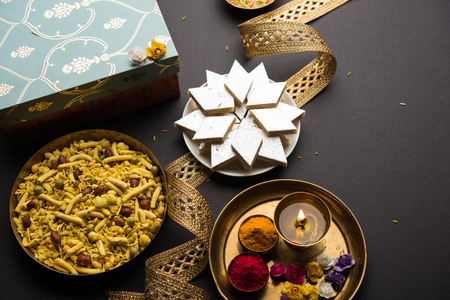1. Understanding Vastu Shastra for Pooja Room
Vastu Shastra, the sacred architectural science of India, holds a special place in every Indian home, especially when it comes to designing the pooja room. Rooted in ancient wisdom, Vastu is not just about structure—it’s about creating harmony between your living space and cosmic energies. The pooja room, or mandir, is considered the heart of spiritual vibrations in an Indian household. By following Vastu principles, you can amplify positivity and prosperity within your home. The placement of idols according to Vastu is believed to channel divine blessings more effectively and maintain a continuous flow of spiritual energy. Embracing these age-old guidelines helps ensure that every prayer, mantra, and ritual performed in your pooja room resonates with purity and peace, inviting abundance into your life.
2. Right Directions: Placement of Pooja Room in Your Home
According to Vastu Shastra, the direction and placement of your pooja room play a crucial role in inviting prosperity, positive energy, and divine blessings into your home. The most auspicious direction for locating a pooja room is the north-east (Ishanya) corner. This direction is considered highly sacred because it receives the maximum morning sunlight, symbolising spiritual awakening and purity. Placing your pooja room here aligns your prayers with cosmic energies, ensuring harmony and tranquillity within your family.
Why North-East Is Significant
In Indian tradition, the north-east direction is associated with Lord Shiva and is considered the zone of divine energy. Locating your temple or pooja space in this direction helps harness spiritual vibrations, making your daily worship more effective. Besides north-east, other favourable directions include east and north. These directions enhance mental clarity, peace, and overall well-being.
Vastu-Recommended Directions for Pooja Room
| Direction | Significance | Suitable For |
|---|---|---|
| North-East (Ishanya) | Maximum positivity and divine vibrations; ideal for all households | Main Pooja Room |
| East | Brings enlightenment and growth; welcomes rising sun energy | Secondary Option |
| North | Invites prosperity and peace; ruled by Lord Kuber (the God of Wealth) | If NE/East not possible |
| West/South-West/South-East/South | Generally not recommended as per Vastu; may disturb harmony if used | Avoid for main worship area |
Local Tips: Simple Ways to Align With Vastu in Indian Homes
If you have limited space or are living in flats common in Indian cities like Mumbai or Bengaluru, try to dedicate even a small niche or shelf in the north-east part of your living room or kitchen for your pooja setup. Always keep the idols facing east or west for best results. Remember, maintaining cleanliness and sanctity in this area is as important as its direction, as per Indian customs.
![]()
3. Ideal Positioning of Idols and Deities
When it comes to setting up your pooja room, the correct placement of idols is crucial for invoking divine blessings and ensuring an atmosphere filled with positivity. As per traditional Vastu Shastra guidance, the location and orientation of deities play a significant role in channelising prosperity and peace into the household.
Direction Matters: The Sacred North-East
The most auspicious direction for placing idols in the pooja room is the north-east corner, also known as the Ishan Kon. This direction is believed to be governed by divine energies and is highly recommended by Vastu experts. If the north-east is not feasible, then east or north directions are also considered favourable.
Placement Guidelines for Major Deities
According to Vastu principles, specific deities have ideal placements:
Lord Ganesha: Should face towards the east or west, symbolising new beginnings and removing obstacles.
Goddess Lakshmi: Place her facing east or north to attract wealth and abundance.
Lord Shiva: The idol should face towards the north; avoid placing Shiva’s idol with Nandi directly facing him inside the pooja room.
Lord Vishnu: North or east-facing placement is considered ideal for prosperity and harmony.
Height & Arrangement
The idols should always be placed at chest level when seated, never directly on the floor. Use a clean wooden or marble platform (chowki) for elevation. Ensure that no idol’s back faces the main door of the pooja room, and there should be adequate space between idols and walls for proper air circulation. Multiple idols of the same deity should be avoided to maintain energetic balance.
By following these Vastu tips for positioning idols in your pooja room, you invite harmonious energies into your home, nurturing an environment where peace, health, and prosperity can flourish naturally.
4. Essential Do’s and Don’ts for Pooja Room Arrangement
Creating a pooja room that radiates positivity and invites prosperity requires mindful attention to both the placement of idols and the overall arrangement of the sacred space. Following Vastu guidelines not only enhances spiritual energy but also ensures that your daily prayers are enveloped in harmony. Let us highlight some crucial do’s and don’ts to help you avoid common mistakes while decorating or organizing your pooja room:
Do’s for an Auspicious Pooja Room
- Place Idols Facing East or West: Ensure deities face either east or west, which is considered highly auspicious as per Vastu Shastra.
- Keep the Area Clean: Maintain cleanliness and purity; mop the floor daily and remove any dust from idols and shelves.
- Use Natural Materials: Opt for wood, brass, or copper for diya stands and decor items to amplify positive vibrations.
- Install a Threshold (Chaukhat): A small wooden threshold at the entrance helps contain spiritual energy within the room.
Don’ts to Avoid Negative Energy
- Avoid Clutter: Overcrowding the altar with too many photos, idols, or decorative objects can disturb the flow of energy.
- No Broken Idols: Remove any chipped or damaged idols immediately as they are considered inauspicious.
- No Storage Above Altar: Avoid placing storage cabinets directly above the altar, as this is believed to suppress divine energy.
- Avoid North-East Toilet: Never have a bathroom adjacent to or above the north-east corner of your pooja room.
Pooja Room Arrangement: Quick Reference Table
| Aspect | Recommended | To Avoid |
|---|---|---|
| Idol Placement Direction | East / West | South / Directly on Floor |
| Sacred Materials | Wood, Brass, Copper | Plastic, Synthetic Decor |
| Pooja Room Location | North-East Corner | Near Bathrooms / Bedrooms |
Cultural Insight
In India, it is customary to light diyas every evening and offer fresh flowers during morning poojas. Remember, simplicity and devotion matter more than opulence when it comes to inviting abundance and serenity into your home through Vastu-compliant practices.
5. Traditional Rituals and Cultural Practices
Regional Customs in Pooja Room Arrangements
Indias rich cultural diversity is reflected in the way pooja rooms are designed and maintained across regions. For instance, in South Indian homes, it is common to have a separate room exclusively for prayer, while North Indian families may dedicate a specific corner or alcove for their deities. In Maharashtra and Gujarat, placing idols on an elevated wooden chowki is customary, symbolizing respect and auspiciousness. Across all traditions, cleanliness and sanctity of the space are paramount, ensuring positive energy flow as per Vastu Shastra.
Preferred Materials for Idols
The material of the idol plays a crucial role in both Vastu principles and cultural practices. Brass is highly preferred in many Indian households due to its longevity and ability to conduct spiritual energy. Marble idols are also popular, particularly in Rajasthan and North India, as marble signifies purity and peace. Clay idols are favoured during festivals like Ganesh Chaturthi, aligning with eco-friendly values and traditional beliefs. It is generally advised to avoid idols made from glass or plastic, as these materials do not resonate well with the sacred vibrations intended for pooja spaces.
Daily Rituals Aligned with Vastu
Following daily rituals not only honours tradition but also harmonises your living space with Vastu energies. Lighting a lamp (diya) every morning and evening is considered auspicious, symbolising the removal of darkness and ignorance. Offering fresh flowers, burning incense sticks (agarbatti), and reciting mantras or prayers are integral practices that enhance spiritual vibrations in the pooja room. As per Vastu, it’s recommended to face east while performing rituals, as this direction invites positivity and prosperity into the home.
Festive Traditions and Special Observances
During festivals such as Diwali or Navratri, many families decorate the pooja room with rangoli designs, colourful fabrics, and garlands. Special pujas may include offering sweets (prasad) or organizing group chanting sessions (bhajan or kirtan). These collective rituals strengthen family bonds and amplify the benefits suggested by Vastu for overall prosperity.
Respecting Tradition While Embracing Vastu
Ultimately, blending regional customs with Vastu recommendations creates a spiritually vibrant pooja room that nurtures both tradition and modern wellbeing. By choosing appropriate materials, maintaining daily practices, and honouring cultural observances, you invite peace, prosperity, and harmony into your home.
6. Energising Your Pooja Room: Simple Remedies for Prosperity
The ambience of your pooja room plays a vital role in attracting positive vibrations and prosperity into your home. Beyond the ideal placement of idols according to Vastu, energising this sacred space with natural and accessible remedies is deeply rooted in Indian tradition.
Light Diyas Every Day
Lighting diyas (oil lamps) during morning and evening prayers is a cherished custom that dispels negativity and invites Lakshmi Devi’s blessings. Ghee or sesame oil diyas placed near the idols are considered especially auspicious. The soft glow brings warmth and spiritual energy, nurturing a sense of peace and abundance.
Use Fresh Flowers and Leaves
Adorning your pooja room with fresh flowers like marigold, jasmine, or lotus every day infuses the space with fragrance and vitality. You can also use fresh mango leaves or tulsi (holy basil) garlands to purify the air and offer sacredness, as these are highly revered in Indian households.
Ringing the Bell: Inviting Auspiciousness
Ringing a small bell before starting pooja is more than a ritual; its resonant sound cleanses stagnant energies and awakens positivity within your home. It is believed that the vibration from ringing the bell pleases the deities and attracts good fortune.
Keep It Clean and Clutter-Free
A clean and well-organised pooja room is essential for maintaining high vibrational energy. Regularly dusting the idols, changing altar cloths, and ensuring offerings are fresh will keep negative energies at bay.
Aromatic Remedies for Tranquility
Burning natural incense sticks (agarbatti), dhoop, or camphor uplifts the senses while creating a spiritually charged atmosphere. Choose fragrances like sandalwood or rose to enhance harmony and invoke divine grace.
By incorporating these simple yet powerful Vastu-approved remedies—lighting diyas, offering fresh flowers, ringing bells, maintaining cleanliness, and using aromatic elements—you can continuously recharge your pooja room. These practices not only honour tradition but also invite prosperity, inner peace, and spiritual growth into your life.


